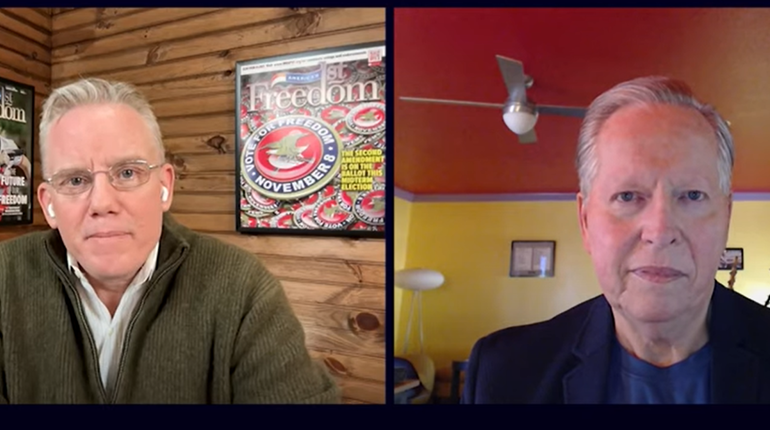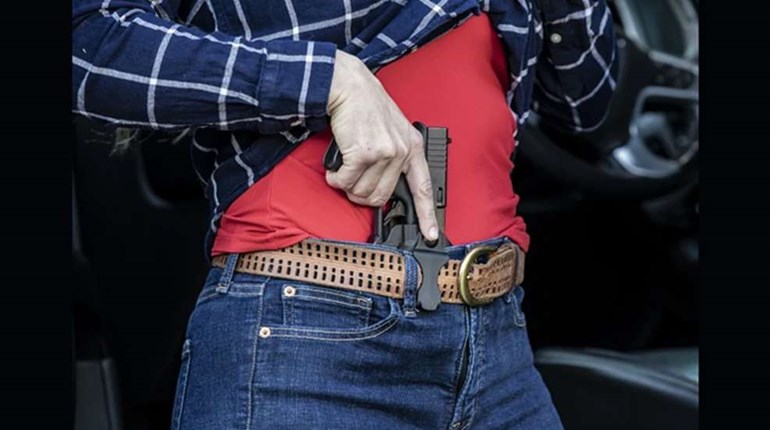
When gun owners voted in President Donald Trump, threats of gun bans, onerous federal restrictions and possible Supreme Court nominees who don’t believe we have an individual right to bear arms went from being a terrifying possibility to being complete nonissues literally overnight.
America’s 100 million-plus gun owners breathed in a long, chest-filling gulp of free air.
Meanwhile, the so-called “mainstream” media took a panicked look around. They were befuddled, lost. They didn’t understand and felt powerless. They needed a new narrative, something, anything to make them feel smarter than the rest of us—even though they’d be better off trying to reach out to America again, to get back in touch, to learn about their freedom.
Then they thought, “Ah, here’s a narrative about gun-owning America we can use.” Gun sales, it seems, are no longer smashing records, but are falling without President Barack Obama in office. They could spin that.
Gun owners, they apparently decided, are an awfully fearful bunch—so scared they can be easily frightened into a buying frenzy. It is as if they think the average gun owner approaches a gun range like a rodent creeping out of the darkness to steal a farmer’s grain. They then—according to this cynical, twisted view—shoot alone before scurrying away back to the hole they came from.
The Huffington Post’s spin is typical of the way many in the media want to portray gun owners right now: “The fact is that the gun industry has always been a boom-and-bust industry, the sales trends driven by fears that guns might be taken away. There simply is no truth to the argument I hear all the time from various Gun-nut Nation mouthpieces that all kinds of new demographics—women, minorities, millennials—are into guns. … [And] the explosion of gun sales during the Obama ‘regime’ basically represented people who owned guns buying more guns.”It is as if they think the average gun owner approaches a gun range like a rodent creeping out of the darkness to steal a farmer’s grain.
This is the narrative the “mainstream” media is comfortable with. Gun owners, they postulate, are just a few scared, aging white men who in a few generations will basically be extinct.
The trouble for them—which is also a boon for freedom—is that all the numbers show they’re wrong.
A look at the Bureau of Alcohol, Tobacco, Firearms and Explosives’ (ATF) annual import/export records of firearms shows that the number of guns available for sale in America rose every year between 2003 and 2013. This number dipped slightly in 2014, but it was still three-times higher than it was at the turn of the century. That is hardly a crash. It is simply a market check.
Also, though Obama was first elected to office in 2008, the ATF’s raw numbers show a growing interest in guns beginning in 2003, during the George W. Bush administration. Gun sales are hardly all about fear of gun control.
The FBI’s National Instant Criminal Background Check System (NICS) shows the same steady rise beginning in 2003. It turned into a tidal wave during President Obama’s second term and has been falling since. But it has not come close to crashing all the way back down to pre-2003 levels. The FBI says it did about 2.23 million background checks last February, which is down about 14 percent from February 2016. But it is still well above numbers reached just a few years ago.
“Our surveys of gun retail outlets have consistently shown us over the last five years that about 22 percent of gun sales are from first-time gun buyers,” says Jim Curcuruto, director of research and analysis for the National Shooting Sports Foundation (NSSF).
An NSSF survey also showed that the number of target shooters rose 25 percent just from 2012 to 2014. Half of the new shooters were female, and 56 percent of them live in urban areas—not in those rural places where the “mainstream” media thinks just about all legal gun owners reside. Some 73 percent of these new gun owners took up the shooting sports when they were older than 18. The average age of these new gun owners was 32 (compared to 43 for long-term gun owners). Now those are big shifts.
This isn’t to say that gun sales haven’t dropped (they have) and won’t drop more (they likely will). Anti-gun politics certainly had much to do with the spike in gun sales; it’s just that the media is conveniently ignoring the rising tide beneath the tidal wave.Anti-gun politics certainly had much to do with the spike in gun sales; it’s just that the media is conveniently ignoring the rising tide beneath the tidal wave.
Any market would rise with fear of a coming ban. Just imagine what would happen to car sales if politicians started seriously talking about banning gas-burning autos to force people to buy electric. There would be people buying and garaging new cars all over America. There would also be a backlash from citizens who want their freedom.
“We don’t expect a collapse, we expect organic growth that isn't all fear-driven,” Lawrence Keane, senior vice president, government and public affairs, for the NSSF. “We are likely to see the market normalize, which is better for the industry long term. It is hard to respond to constant spikes. Slow and steady wins the race.”
The potential passage of national concealed-carry reciprocity legislation, which would enable millions of law-abiding Americans to more easily travel with their self-defense guns, could encourage more people to buy handguns, as the fear of being slapped with a felony for simply crossing a state line would go away. Deregulation of firearm suppressors would also likely result in increased sales.
The truth is, the firearm market is robust, complex and has many niches. It is not the simple, frightened thing some in the “mainstream” media seem to wish it was.
Frank Miniter is the author of The New York Times bestseller The Ultimate Man’s Survival Guide—Recovering the Lost Art of Manhood. He is also the author of This Will Make a Man of You and The Future of the Gun. He is a contributor to Forbes and writes for many publications. His website is FrankMiniter.com


































